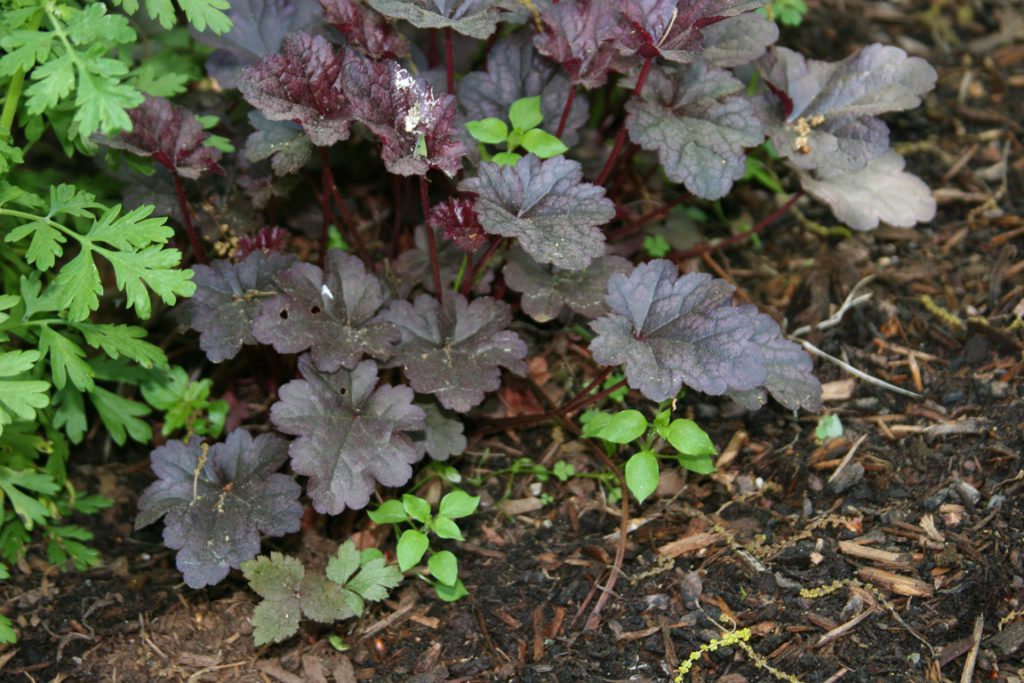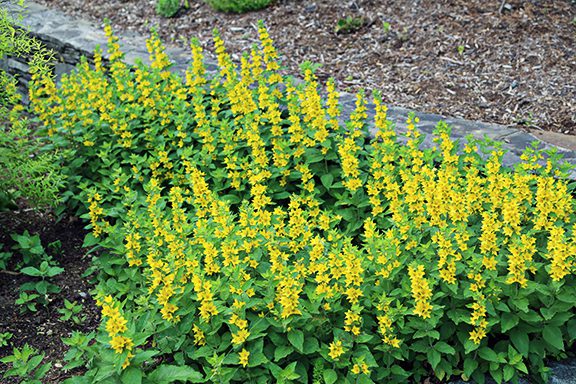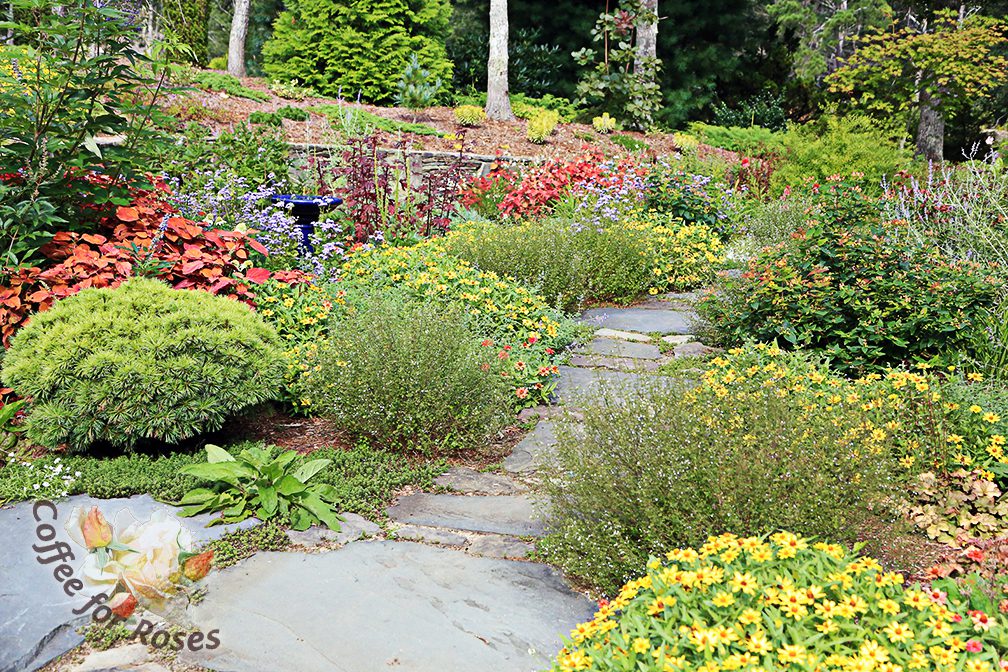Perennial Problems, Perennial Problem Solvers
Perennial Problems, Perennial Problem Solvers
It’s that time of year…suddenly you notice that your perennial garden has “issues.” Grass has invaded some of your plants, the iris or black-eyed Susan’s are taking over, your catmint is flopping, and half of your plants are wilting every afternoon. The garden that looked so pretty and promising in early May has problems, and you feel overwhelmed.
Here are a few common perennial garden troubles and what to do about them.
“Grass has invaded my flower garden. How can I get it out?”
There is no easy way to rid a garden of the grass that creeps in from the lawn or the wild. If there is only a bit of it, use a trowel and dig out all you can, loosening the dirt under the grass first so that you’ll be able to pull out the roots. If large clumps of perennials are infested, it’s likely that the roots of the weedy grass are intertwined with the roots of your plants and it’s next to impossible to separate the two. You have two choices in this case: 1. Dig up the entire clump, put the perennial aside on the lawn and wash the dirt off the roots with a hard stream of water. Once the dirt is gone and you have bare roots, try to separate the grass and its roots from the perennial the best you can. Then replant the perennial after being sure the area where you’re placing it is also free of grass. The perennial won’t look great this summer, but it should live. Or, 2. Dig up the perennial and the grass and dispose of the entire group, grass, perennial and all. (Let it dry out in a wheelbarrow for a few weeks and then place in the compost or on a brush pile.) Make sure that part of your perennial garden is free from grass before you place another plant there.
“The Iris are taking over my entire garden!”
Or maybe it’s the gooseneck loosestrife, the Rudbeckia, or the Joe-pye weed. Or another overly enthusiastic perennial. June is as good a time as any to edit out plants by digging out the excess. While some perennials such as Eupatorium (Joe-pye weed) can get pulled up and a group left in place, Iris should get dug out, removing all of the plant and replacing only a small piece from the outside edge of the clump where the growth is newest. Put pieces about the size of a dinnerplate back in the garden, and toss the rest. Yes, I know some of you hate to throw a plant away but in this case force yourself. If you replant all the pieces you’ll just have more to edit and divide in the future.
“My catmint looks lovely for a while but then it flops open and shows a bare middle.”
Some varieties of Nepeta are more prone to this than others. Be sure you’re not being too nice to it, however. Nepeta that’s kept on a lean diet of water and fertilizer is less prone to flopping. This is true of some other perennials as well. Fertilize perennials with a light application of Flower-tone or another organic fertilizer in the spring, but don’t continue to fertilize or use a synthetic fertilizer unless a soil test indicates that it’s needed. Water Nepeta deeply once a week if Nature hasn’t delivered an inch of rain in the past 7 days.
“The Summer Phlox wilts every afternoon in the hot sun, even though I’m watering it every day.”
It’s been dry. If you have a plant that wilts daily, chances are that you’re hand watering and that’s never enough. If you have an automatic sprinkler system it’s either not reaching all of your plants or it’s not watering deeply enough. Perennial beds should get the equivalent of an inch of rain once a week. (Get a rain gauge so you’ll know if the latest storm delivered that or not. And no, the water in your bucket, wheelbarrow or tuna can isn’t the same measurement. Rain gauges measure cubic inches of rain falling on a square inch of soil.) If your phlox is wilting daily you need to water the entire area, not just the base of the plant, and it needs to soak the soil down at least 12 inches so that the roots remain damp for several days.
“I pull weeds out of my perennials and they are back a week later!”
Weeds are designed for survival, and many weed seeds germinate all summer. The problem is that when we pull one weed out of our perennial beds it disturbs the soil and exposes more weed seeds to the light. Then we water our perennials and that combination of water and light trigger the germination of those seeds. The best way to stop this cycle, or at least slow it down, is to spread an inch or two of mulch over any bare soil in your garden.
“My friend says to plant things thickly so that you’ll have fewer weeds. Is he right?”
Yes, there is truth to what he’s telling you. When plants are growing thickly they shade the soil so that those weed seeds don’t germinate. This is why some plants are actually fairly weed-smothering. Geranium macrorrhizum, Epimedium, lady’s mantle (Alchemilla mollis) and Hosta, for example, make great weed-smothering groundcovers in part-shade. Hosta and Epimedium do the same in full shade. ‘Zagreb’ Coreopsis, wooly thyme, and creeping phlox (Phlox subulata) do the same in full sun. Other plants, such as Iris, allow light to reach the dirt inside their stems and this is why they often get infested with weeds. For less weeding, use perennials that grow thickly and place them closer together so that there is no bare soil in the garden.
“My perennial garden looks great to July but after the daylilies finish there isn’t much color.”
This is a common problem because most people buy perennials early in the season and most of the plants on sale then are early to mid-season bloomers. So unless people realize that they’ve got to seek out late summer and fall flowering plants, their gardens are only in bloom into the middle of July. There are two good solutions to this problem. The first is to plant perennials such as Russian Sage, Agastache ‘Blue Fortune,’ goldenrod (Solidago sp.) and upright Sedums (Pure Joy, Autumn Joy etc.) that flower in August into September. The second is to leave space in a perennial garden for annuals. Frankly, a combination of these too approaches is best.
Annuals such as Ageratum ‘Blue Horizon,’ Cleome Senorita Rosalita and Senorita Blanca, marigolds, Sunpatiens, and Zinnias will insure that there are flowers in your perennial garden from late-June into October.
Perennials are wonderful plants not just because they return every year, but for the kaleidoscope of color that they provide as the plants come in and out of flower. A perennial bed is also beneficial in that it calls us to come into our gardens frequently. Don’t think of this as being work or high-maintenance…consider that it’s a relationship, and like a good friendship, you’ve got to invest thought, time and a bit of your heart into the connection to keep it strong.



Subscribe To Our Newsletter
Sign up for our weekly email about sales and events.
